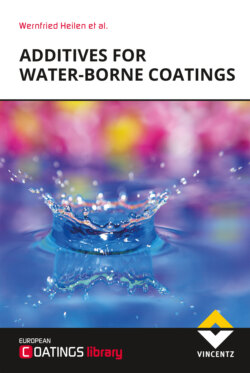Читать книгу Additives for Water-borne Coatings - Wernfried Heilen - Страница 36
На сайте Литреса книга снята с продажи.
2.4Tips and tricks
ОглавлениеWhen selecting a wetting and dispersing additive, the suitability of its chemical structure for the particular pigment and its compatibility with the surrounding binder are of prime importance.
The suitability of a wetting and dispersing additive for a particular pigment is described in Chapter 2.3 “Chemical structures”. To summarise: an additive which contains acid groups is adequate for inorganic pigments; an additive with nitrogen groups is very effective on carbon black surfaces.
The compatibility of wetting and dispersing additives for water-borne applications with the binder matrix can only be tested in conjunction with a pigment. The surfactant structure – hydrophobic anchor groups and hydrophilic side chains – of some additives makes it impossible for some surfactants to be water-soluble in pure form. As soon as pigment particles are present, the hydrophobic portions of the additive molecules orientate themselves to the pigment surface and the hydrophilic segment protrudes into the water phase. The pigment-particle/additive combination then becomes water-soluble.
The pH is also of great importance. To avoid pigment shock, the pH of the pigment grind/pigment concentrate and the let-down resin or the base paint has to be the same. In many cases, and this is especially true for inorganic and carbon black pigments, the pH of the pigment concentrate needs to be adjusted. Amines and alkali hydroxides are among the suitable compounds for the neutralisation process. Neutralisation should be carried out after the pigments have been wetted by the wetting and dispersing additive. For many inorganic pigments a free acid group can be more conducive to adsorption of the additive than a neutralised acid group.
